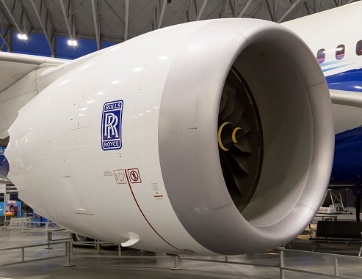At the present time, machine learning based on data collection and analysis, and artificial intelligence as the next stage of its evolution are no longer an attribute of fantastic novels and films—it is a working technology capable to solve real-life tasks in various industries.
The claim that information would define the future reminded me of the famous party scene in the 1967 movie The Graduate. A businessman buttonholes Benjamin, the college graduate played by Dustin Hoffman, and offers him a single word of unsolicited career advice: "plastics". I wondered whether, if the scene had been written a few decades later, the businessman's advice would have been: "One word, Benjamin: 'information'".
Bill Gates, The Road Ahead
Behavior data and patterns
What is the difference between the modern world and the world that existed just a quarter of a century ago, and which many of us remember very well? The main distinctive feature is the digitalization of all processes, which leads to immense amounts of data generated and stored.
Data is collected by various companies — retail chains, financial companies, industrial giants, internet search engines, and social media. All of them want to make it useful for creating new products and services. With the machine learning technology, you can take all these immense amounts of data with complex structure and describe it using a relatively simple model that can be implemented in existing business management systems.
For example, the audience of a retail chain in supermarkets and in the Internet includes millions of customers who buy thousands of products every day generating a huge transaction database. The theory of machine learning suggests these contain a limited number of ‘patterns’ — templates of consumer behavior. A regular weekly visit to a supermarket is one example of a recognizable pattern, planning a party with friends is another pattern, the birth of a child is the third pattern, and all of them can be explained by certain underlying factors and their interrelations. The only thing remaining is to use machine learning — and such a retail chain will have breathtaking prospects…
Of course, this is not that easy, but one does not have to start from such an extremely complex system, as FMCG.
Building a recommendation system in three months

Long before the modern take on machine learning, there was such a type of software as programmable expert systems. The general concept of these systems emerged in the 1970s, and the peak of their popularity was dated the last quarter of the 20th century. In the 1980s, the expert systems were rather popular in USA and Europe, and Japan had their own expert system and AI project named Fifth Generation Computer Systems. Despite the broad interest, these systems were unable to become really widespread, because people had to create knowledge bases manually. Furthermore, classic expert systems used abstract logic — at first, it was a binary logic (true-false), then they switched to the so-called fuzzy logic, but it was still far from reality.
It turned out that the use of probability theory (which is inherent to state-of-the-art machine learning systems) is more promising. Such systems do not need to be programmed: they are trained in the course of work (data scientists call this training method “precedent-based learning”).
One of the most intriguing use cases of machine learning is solving the task of adequate assessment of salary level. The market is changing very quickly, new specializations appear, new professionals become demanded — that is why a system that assesses the market price of a specialist by his or her CV should be highly demanded in the HR industry. Such a tool has been implemented several years ago by an American company Glassdoor, and only recently a Russian company SuperJob announced the development of a similar system.
In the recent 10 years, the SuperJob agency became well-known by its project named Salary Meter — a monthly reference book that publishes actual indexes and salary ranges for the Top-10 most popular jobs in every industry. However, having the largest base in Russia (over 17 million CVs) and employer’s offers (over 60 thousand vacancies per day), the company could make a step further – and it made it.
Precise salary calculation is critical today for HR services. If an HR specialist mistakes by 2 thousand rubles in the assessment of the salary of retail network %%, then an overrated estimate will lead to excessive millions of rubles spent monthly on employee’s salary, and an underrated salary will make the employees leave and start working in competitor’s network.
And now Microsoft and SuperJob in just three months develop a system based on machine learning technology that analyzes the vast base of CVs in SuperJob and predicts the salary for a specific profession or position. Processing massive amounts of CV data every day, the system is able to find the values corresponding to the criteria included into the assessment algorithm, match them and determine the level of salary corresponding to a specific CV.
By the end of February, SuperJob plans to make an official issue of the service release and not only use it for in-house purposes but also offer it to corporate clients as an intelligent service. This will solve the issue of sorting out candidates from the part of the CV base that does not contain data on the level of salary, as well as the problem of searching for employees with regional, market, and other factors given into account. It is also possible to apply this solution for ordinary users: for example, it is possible to show the candidates how their market value changes as soon as they enter information about working experience, education, knowledge of foreign languages, etc.
During the system development process, Microsoft specialists have found an interesting pattern: the set of important parameters for differs for various salary levels. For example, such parameters as the length of working experience, place of living, age, and gender are important for vacancies and positions with a level of monthly salary lower than 100 thousand rubles. As for jobs worth more than 100 thousand rubles per month, other parameters come into play: education, readiness to relocation, and number of languages spoken.
Brand new banking experience in just two months

A while ago, computer-generated data were considered just a byproduct of information technologies, and businesses stored these data just because they had to. Only in the 21 century, these vast amounts of data have become a source of information themselves.
Let us return to our — still hypothetical — example of a retail chain that will make a full-scale implementation of a machine learning system. From day to day, it sells thousands of products to millions of buyers. The details of each transaction — date, buyer name, purchased goods and their price, total amount, etc. — are stored in the database. Eventually, the volume of these data becomes way too large. How can one use them?
Sometimes, stores will и confidently understand what does a buyer need — they will learn to find patterns in user behavior and forecast them. As a result, they will be able to considerably optimize their activity, and their sales and revenues are definitely going to grow, to a large extent because of the client’s satisfaction growth. It is unlikely that the consumer behavior forecasts will become 100% accurate, but it is quite possible to create practicable models that can reveal patterns and make forecasts.
Professionals call this process “data mining”, or smart data analysis. This is one of the types of machine learning — computer trains by revealing patterns from data and making generalizations. Generalization-based machine learning is a step ahead compared to precedent-based learning. This learning is much closer to human learning — it can be used to extract knowledge.
While AI-powered FMCG retail is still quite a distant future, banking — a rather simple but still highly automated type of retail trade — has much clearer applications of machine learning. According to a research by SoftServe, 62% of organizations (including the majority of financial companies) will be using machine learning for the development of new approaches to marketing, sales, scoring, etc. For example, the Khlynov Bank from Kirov has already implemented a solution that optimizes ATM maintenance.
Efficient management of remainders in banks requires knowing precisely, where, when, and how much money to load into an ATM. To reveal this, it is necessary to analyze a majority of factors defining the customer behavior — their location, working hours, days when the salary is calculated, etc. Machine learning makes these systems independent from human factor and subjectivity, thinks Alexander Vtyurin, Deputy Chairman of the Board of the Khlynov Bank. “A human always behaves too wary, — says he. — For example, just 3 million rubles need to be loaded to an ATM per week, but people usually load as much as 7 million to be on the safe side.” The Bank’s analysts estimate that this caused around 25% of the clients’ cash being “frozen” in ATMs.
The implementation of BI tools for solving this problem required just 2 months. The Bank selected the predictive analytics tools included in the Microsoft Azure cloud. All required data have been aggregated in the corporate storage powered by Microsoft SQL Server. The project did not require considerable investments and produced a tangible result very quickly — now the bank estimates that only 15% of clients’ cash is “frozen” in ATMs. The Bank can find a good use for the released funds: for example, granting loans.
Alexander Vtyurin says that the majority of banking processes in the future will be managed by AI. As a result, consumers will receive the most personalized services, check the solvency of small and medium businesses, etc.
Rolls-Royce helps clients save millions of USD

Internet of Things (IoT) is a network of physical objects (“things”) that integrates communication technologies and sensors for controlling parameters. This is an ideal concept for controlling even the large-scale industrial facilities. Imagine that IoT will help enable reduce global fuel consumption by just one percent — this will save trillions of dollars. Ubiquitous implementation of IoT in industry, or the Industrial Internet of Things (IIoT), will be the dawn of a new economy worth billions of dollars.
McKinsey & Company considers that wide-spread sensor networks would help mining companies get much more mining data. The IoT implementation in all fields would cause a real paradigm shift — retail networks would dramatically improve their understanding of consumer behavior, manufacturers would every second know everything about the state of their equipment, and clinics would treat patients with higher efficiency.
With the Industrial Internet of Things, Rolls-Royce, a company manufacturing aircraft engines, is able to sell clients not engines, but service agreements, under which the client pays only for engine operating hours. At the same time, the company guarantees the engine performance and is fully responsible for their servicing, starting from scheduled maintenance. With this business strategy, the company can conclude larger contracts offer a more sustainable production program. Its business has become more predictable, and it grows both in terms of in-house spare parts and in the service segment. The turnover of Rolls-Royce’s service business of is now 4 times higher than that of the equipment sales business.
Now Rolls-Royce leases over 13 thousand engines for commercial aircraft all over the world and comprehensive services on aircraft’s technical maintenance. The company has amassed huge experience and collected a large array of aircraft equipment data. To improve its customer experience, Rolls-Royce has created a solution based on smart machine learning and IoT solutions running in the Microsoft Azure. The solution tracks and analyzes the arrays of data coming from sensors installed in aircraft.
Using the collected data and previously generated forecasts, the Rolls-Royce service offers recommendations and sorts out the factors that influence fuel consumption — the main cost item — most. Moreover, the solution warns about the ineffective operation of specific engine components and recommends their replacement or maintenance — or, on the contrary, it postpones this procedure if a part works stably despite the fact that its service life is coming to an end. This enables not only just-in-time repair, but also eliminates off-schedule repairs. There was a story when during one of the flights a pilot suspected an engine failure, and the operating procedure demanded him to make an emergency landing for engine diagnostics. However, the Rolls-Royce collected the current readings of the engine sensors and recommended to continue the flight. This was the right solution — and it saved the airline around a million dollars. “Thanks to the developing technologies and impressive predictive analytics, we help our clients implement new capabilities,” — says Nick Farrant, Senior Vice President at Rolls-Royce.
Sensors, sensors everywhere
Today, more and more industrial assets can transfer information about their state with sensors. The manufacturer tracks the metrics, plans capital and scheduled equipment repairs and maintenance, and makes decisions on modernization. To make use of big data, BI, and IoT technologies, which add intellectual and communication capabilities to industrial environments, enable real-time situation monitoring, and inform about the need to perform preventive equipment maintenance, it is necessary to implement an integrated analytical system that collects information from industrial sensors, processes it as big data, and maintain continuous contact with vendor in real-time mode. This implies the presence of a third party — a high-tech service provider — in the business model of the service.
IoT is traditionally used in Business-to-Business applications. The use case is usually the following. A developer or a group of developers offers an IoT solution to a corporate client. The customer must independently implement the technology or purchase the appropriate service from a system integrator or another service company. The buyer is also the user of the solution. The cases based on this model can be found in the oil industry, utilities, as well as the field of video surveillance and security systems. Another — relatively new — example of this model is a smart home.
In the indirect distribution model (Business-to-Business-to-Consumer), the corporate service provider buys everything required to create an IoT solution and builds it. Then it can deliver the solution to end users or enterprises. This model is today's de-facto standard for the distribution of IoT solutions due to their technical complexity. Typical applications of this model are transport monitoring, preventive maintenance, video surveillance and security solutions, and cargo management.
IoT for stores

All in all, how will smart FMCG retail look like? Maybe like Amazon Go, the first smart minimarket. However, not much is known about the technical details about the implementation of Amazon's “Just Walk Out Shopping” service — the official description of the system just mentions computer vision, machine learning, and the Internet of Things. The system uses a network of sensors located throughout the store. AI algorithms determine in real time exactly where each visitor is looking (even in the crowd), and what labels are they reading (even those that are not partially visible). After picking up their purchases, Amazon Go customers simply exit the store through turnstiles, and funds are automatically deducted from their Amazon user account.
What's next?
The ultimate goal of AI development — the full automation of all industrial processes and business decision making — may never be achieved. But even the opportunities of machine learning prospects that do not seem fantastic promise to radically change the existing business environment.
Today, airlines have already started using a dynamic price adjustment model that increases and decreases the fares in real-time mode — but more advanced models are going to appear in the AI- and IoT-powered world. In the future, this will be a total game-changer. Industrial internet and machine learning provide a deeper understanding of the operation and consumption principles — in the future, it will be possible to use pay-per-use payment scenarios and flexible cost models widely.
Machine learning has already proven its viability — it can solve more and more problems in various fields. Machine learning is one of the ways to create artificial intelligence. As the technology advances, the scope of application of smart systems with machine learning will start to grow — and the farther away, the more complex the problems solved with the help of data mining will be.









